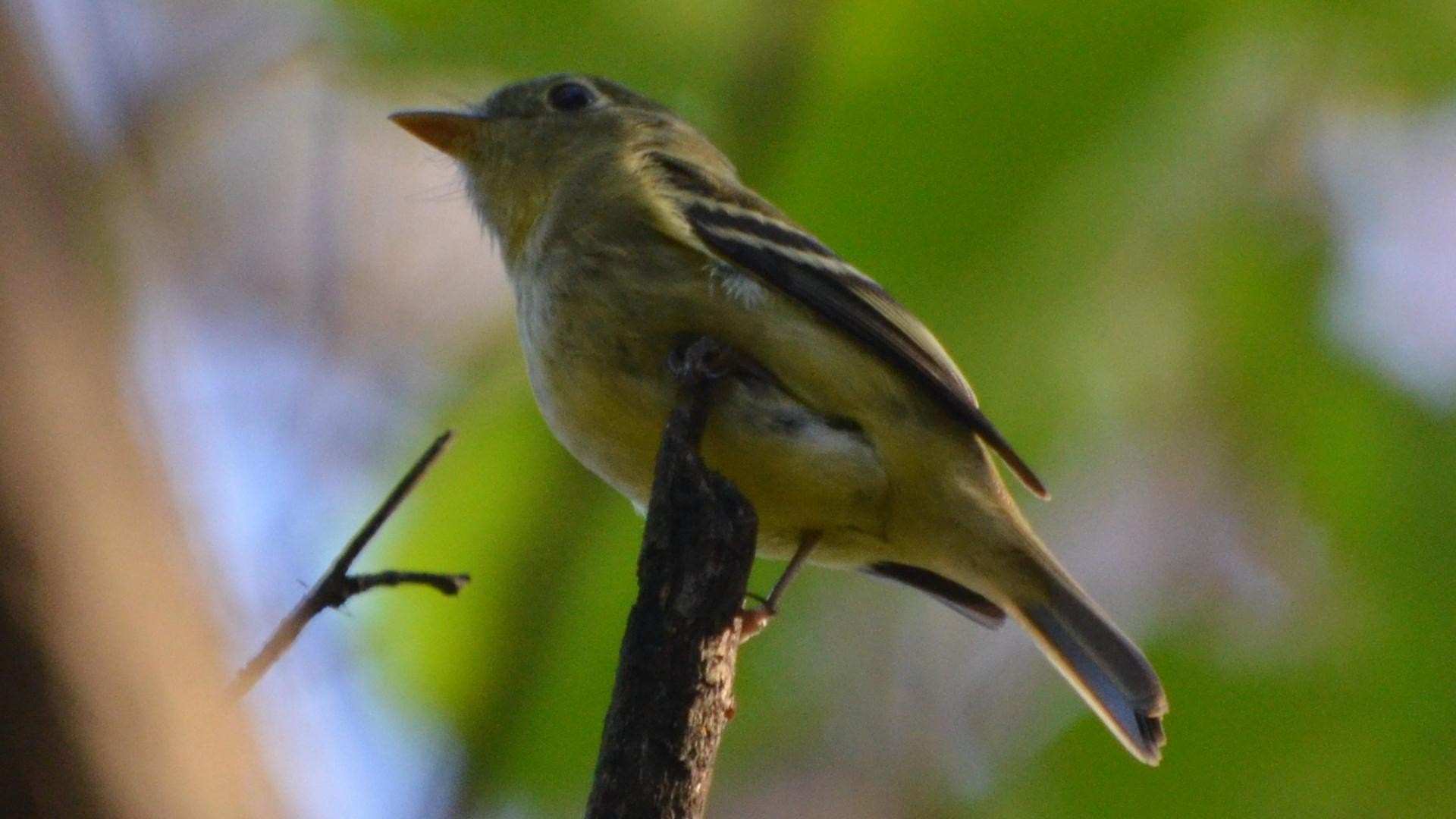Yellow-bellied Flycatcher
A species of Empidonax flycatchers Scientific name : Empidonax flaviventris Genus : Empidonax flycatchers
Yellow-bellied Flycatcher, A species of Empidonax flycatchers
Botanical name: Empidonax flaviventris
Genus: Empidonax flycatchers
 Photo By Andy Reago & Chrissy McClarren , used under CC-BY-2.0 /Cropped and compressed from original
Photo By Andy Reago & Chrissy McClarren , used under CC-BY-2.0 /Cropped and compressed from original Description
Adults have greenish upperparts and yellowish underparts (especially on the throat), with a dusky wash on the chest. They have a white or yellow eye ring that lacks the teardrop projection of Pacific-slope (E. difficilis) or cordilleran (E. occidentalis) flycatchers, white or yellowish wing bars that contrast strongly against the black wings, a broad, flat bill, and a relatively short tail when compared to other members of the genus. The upper mandible of the bill is dark, while the lower mandible is orange-pink. Measurements: Length: 5.1-5.9 in (13-15 cm) Weight: 0.3-0.6 oz (9-16 g) Wingspan: 7.1-7.9 in (18-20 cm) Yellow-bellied flycatchers wait on a perch low or in the middle of a tree and fly out to catch insects in flight, sometimes hovering over foliage. They sometimes eat berries or seeds. The yellow-bellied flycatcher's song can be transcribed as a rough, descending "tse-berk", which can be similar to the more common least flycatcher's snappier, more evenly pitched "che-bek." 
Size
14 cm (5.5 in)
Life Expectancy
3.92-5 years
Nest Placement
Ground
Clutch Size
2 - 5 eggs
Incubation Period
1 - 2 broods
Number of Broods
15 days
Nestling Period
13 - 15 days
Feeding Habits
Yellow-bellied Flycatcher catch insects in lower to middle forest levels, either in midair or from vegetation. They consume crane flies, flying ants, beetles, caterpillars, mosquitoes, midges, stoneflies, spiders, and occasionally fruit like poison ivy.
Habitat
Yellow-bellied Flycatcher typically inhabits boreal forests and is associated with wet habitats, such as muskegs and bogs. These birds favor environments with dense moss cover and a shrubbery understory that includes plants like heath and Labrador tea. They are found at various altitudes, thriving in black spruce stands in summer, while during migration, yellow-bellied Flycatcher utilizes deciduous woods and forest edges. Wintering yellow-bellied Flycatcher prefer dense rainforests, high-elevation evergreen forests, and shade coffee plantations, often near streams or in semiopen areas.
Nest Behavior
The female selects the nest site and constructs the nest. Yellow-bellied Flycatcher breed in late spring to early summer, with egg-laying soon following nest completion. Both parents participate in feeding and caring for the young.
Nest Characteristics
Yellow-bellied Flycatcher build their nests on the ground in shaded areas with ample vegetation, often under tree roots, in log holes, or at the base of ferns. The nest is well hidden, primarily made of moss, with grasses and sedges shaping a cup, lined with fine rootlets.
Dite type
Insectivorous
People often ask
Migration Overview
These birds migrate to southern Mexico and Central America. 
General Info
Feeding Habits
Bird food type
Bird Feeder Type

Platform
Sounds
Call
Recording location: Costa Rica
Behavior
Yellow-bellied Flycatcher exhibits distinctive behaviors evident through their daily activities within their densely forested habitat. They deftly navigate the mid and lower canopy, often flicking their tails and scanning for insects with sharp, quick movements of their head. Their feeding involves agile sallies from perches to snatch insects mid-flight or from vegetation. Yellow-bellied Flycatcher's communication is primarily through melodic songs used for mating and territory defense, characterized by a dramatic throwing back of the head. They are known to escalate their territorial displays with pronounced songs, feather erecting, and dramatic wing gestures when faced with competitors or threats. Remarkably, yellow-bellied Flycatcher maintains territorial behavior even in wintering grounds, signaling their presence with distinctive 'tu-wee' calls as they forage.
Species Status
Not globally threatened.

 Photo By Andy Reago & Chrissy McClarren , used under CC-BY-2.0 /Cropped and compressed from original
Photo By Andy Reago & Chrissy McClarren , used under CC-BY-2.0 /Cropped and compressed from original Scientific Classification
Phylum
Chordates Class
Birds Order
Perching birds Family
Tyrant flycatchers Genus
Empidonax flycatchers Species
Yellow-bellied Flycatcher